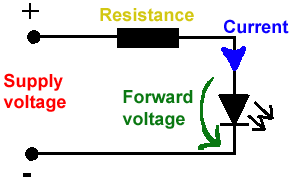AUTOMATIC SOLAR TRACKER
starts following the SUN right from dawn, throughout the day, till evening, and starts all over again from dawn next day. On cloudy weathers, it remains still and catches the SUN again as it slips out of clouds. It does all this automatically, employs cheap and inexpensive components, and is very accurate.Let us see how it does all this.
There are three Electronic Modules to be explained. First one is the HORIZONTAL SENSOR MODULE. It employs the timer 555 in the MONOSTABLE MODE. PIN 2(Trigger Pin of 555) is hooked up with a VOLTAGE DIVIDER NETWORK(PLEASE see FIGURE 2). PIN 4(Reset) is hooked up with ANOTHER VOLTAGE DIVIDER NETWORK.

Fig 1: Block diagram of the tracker following the sun all through

Fig 2: Horizontal sensor electronic circuit
The LDR(SAY LDR A) which is always illuminated by light through FRESNEL LENS ARRAY, has Low Resistance(in presence of light resistance of LDR decreases and vice-versa). We know V(OUT)=V(IN)*[R(bottom)]/[R(bottom)+R(top)], where R stands For Resitance. So in SUNLIGHT, when LDR A’s resistance Decreases, VOLTAGE AT PIN 4 Increases. TIMER is no more RESET. PIN 2 is now lower than 1/3 rd Vcc(as the horizontal LDR 1, say LDR B does not initially receive light through its rectangular slit, so its resistance is high(Rtop=8 K ohms), consequently V(OUT) is low). This triggers the timer which gives a pulse to Decade Counter’s Clock(14) PIN and triggers it. The Decade Counter CD 4017 gives a NORMAL STEP DRIVE pulse to the Horizontal Unipolar Stepper Motor 1(coupled to the tracker unit) to rotate the tracker position so as to receive sunlight(STEP ANGLE of 2 DEGREES). This goes on till the horizontal LDR 1 is fully in SUNLIGHT(resistance low, so PIN 2’S VOLTAGE HIGH). Thus the tracker has followed the SUN Horizontally.

Fig 3: Horizontal Sensor electronic circuit
We will come to the Vertical Sensor Module, but first let us see what the DAWN LDR(SAY LDR C) does. At night the horizontal Module timer 555 remains Reset(as LDR A is in darkness so its resistance is high, thus pin 4 voltage is low, and the TRACKER points at WEST(where SUN has set). Next day when SUN rises again in the EAST, the DAWN LDR which is located at the back of the TRACKER, points at EAST. So when it receives sunlight its Resistance goes low, thus Voltage at pin 4 is high and the timer triggers the Decade Counter which in turn switches the Motor on, thus the TRACKER again moves towards the EAST. Then the TRACKER functions as previously.
Now placed with the Horizontal Sensor LDR 1 is another similar LDR 2 which receives the sunlight as and when does LDR 1. SEE FIGURE 3. So now, as LDR B(THE 1st horizontal one) receives sunlight, so does Horizontal LDR 2(SEE FIGURE 1, THESE 2 LDRs are placed together with same alignment properties and separated by an optically insulated coating(from each other).Thus when Motor 1 comes to rest, and as the second horizontal LDR (SAY LDR D),is same way coupled to the second timer’s(of Vertical Module) Reset pin as was the ALWAYS ILLUMINATED LDR A, it brings the second timer out of its Reset mode) by the previously discussed VOLTAGE RELATIONSHIP). EYE SENSOR LDR(SAY LDR E) of the tracker receives sunlight by an Anti-Reflection Coated, small Rectangular Slit, so reacts only when SUN directly points at it. The second 555’s PIN 2 is same way connected to this LDR as was the first 555’s to Horizontal LDR 1. So now that it still not receives sunlight (resistance high, so Vout low) and pin 4 is no more Reset, the second CD 4017 MAKES THE SECOND STEPPER MOTOR 2 Rotate(Coupled so as to only rotate VERTICAL SENSING BLOCK/EYE BLOCK ). This movement continues till the SUN directly points at the EYE of our TRACKER. Then the TRACKER STOPS, pointing very accurately at the SUN.FIG 2 and FIG 3 follows.

fig 4: Stepper motor control board
In figure 4 I have only shown the Horizontal Motor Control Circuit. The Vertical One uses a similar Decade Counter, NPN Transistors, Diodes(to encounter BACK EMF of Power Transistors due to Fast Switching). I chose for a Step Angle of 2 Degrees for the Unipolar Steppers. They are driven in a Normal 4 Step Sequence, first coil A is energised simultaneously with coil B ,then coil C with coil D. Thus the Motors rotate by 2 degrees each time. The Charging Interval(how long pin 3 of 555’s remains high) is almost in synchronism with the steps/second speed of the motors(here 600 steps/sec.), to avoid FALSE TRIGGERING.
NOTE:
- For 555 in MONOSTABLE MODE, T=1.1*R*C.
- For the FRESNEL LENS ARRAY , the standard FL 40(Focal Length=0.4 inches) Or FL 65(Focal Length=0.65 inches) FRESNEL LENSES could be used (with the Grooves facing the LDRs).
- For the ANTI-REFLECTION COATING, MULTI-LAYER COATING could be used to minimize loss due to REFLECTION. By using alternating layers of a Low-Index material like SILICA and a Higher-Index material, it is possible to obtain Reflectivities as low as 0.1% at Single Wavelength.
CONCLUSION:
We Conclude with the ADVANTAGES of the TRACKER MODULE SYSTEM:
- Uses SIMPLE, INEXPENSIVE ,EASY TO GET 555 timers and LDRs.
- The whole System draws only 25 MicroAmperes of Current when the Motors are not rotating.(555 timer’s off-state current req. is very less).BATTERY POWER IS SAVED.
- The TRACKER not only follows SUN from EAST to WEST and back to EAST in a cyclic manner(Horizontal Motor Module),but also tracks the Angular Movement of the SUN with respect to its ZENITH ANGLE to the Horizon(Vertical Motor Module and EYE).This is a VERSATILE quality for which the TRACKER could easily be used in conjunction with Solar Panels to derive maximum Solar Energy. Fast Motor Response(600 steps/sec.),no FALSE TRIGGERING, a Very ACCURATE System, it requires no Programming Devices(MICROPROCESSORS or MICROCONTROLLERS), so is NOT COMPLICATED.
- alıntıdır.




Hiç yorum yok:
Yorum Gönder